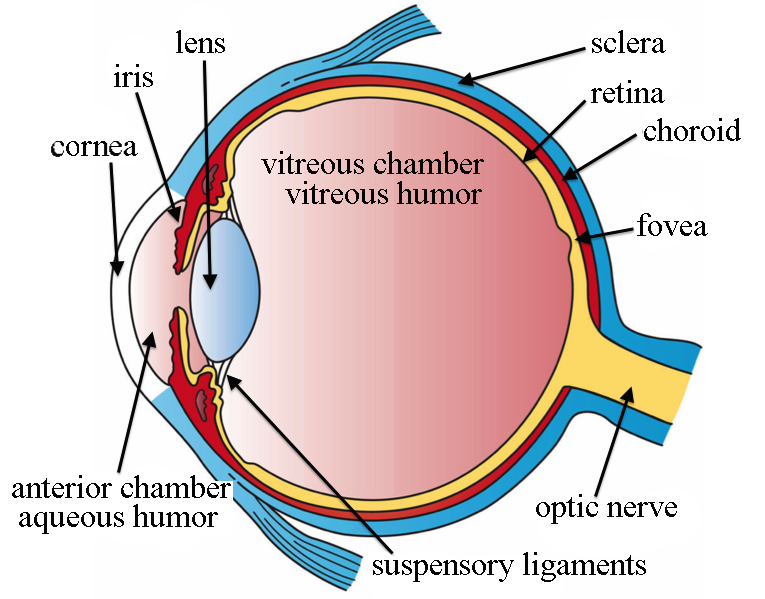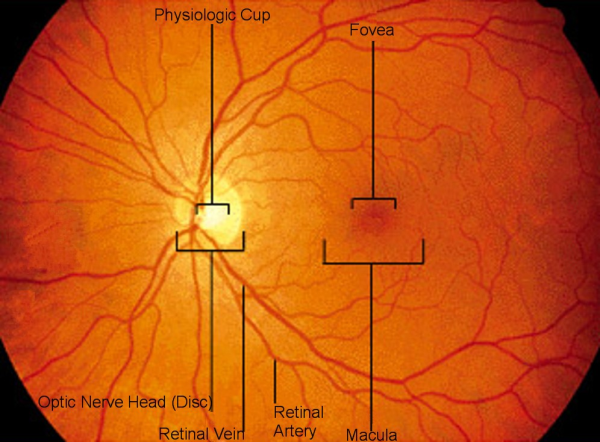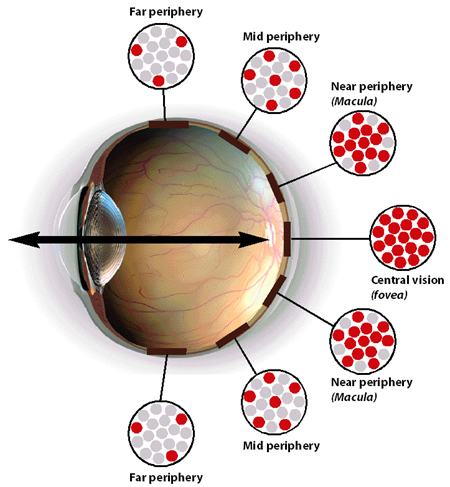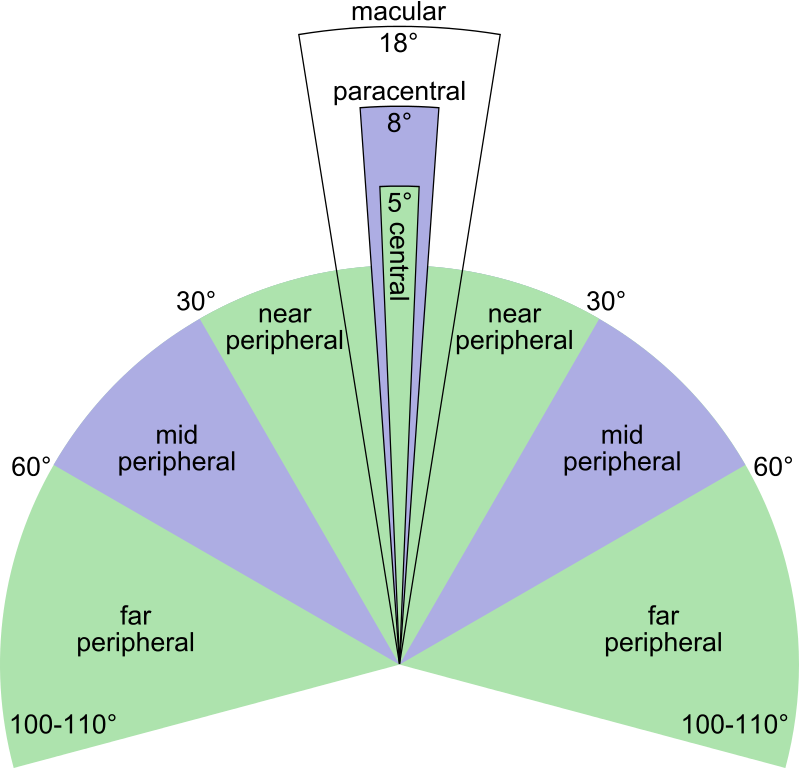Why don't we get color or detail information from our peripheral vision?
1 Answer
It is due to anatomy of retina of human eye.
Explanation:

The picture above details the anatomy of eye. The main parts responsible for accommodation of eye and focusing the image of the object which is being viewed are: Cornea, Iris, lens, Suspensory ligaments, Choroid, Ciliary muscles attached to the lens (not shown in the picture), on the left hand side.
A sharp image is formed by the lens system on the photosensitive part of eye called Retina, located at the back of eye; towards the right side of the picture.
The second picture appearing below shows the Retinal anatomy in detail.

The retina contains two types of photoreceptors (neurons). These are called rods and cones. Visual information received by the photoreceptors is translated to neural signals by the nerves. These signals are carried to our brain via optic nerve, where these are interpreted as our vision.
The optic nerve is devoid of any photoreceptors, as such it corresponds with our natural blind spot.
Cones are highly sensitive to light and color information. These distinguish fine detail which is why they are denser in the central retina.
On the other hand rods do not detect color and are sensitive to dim light, movement and shapes. These are about one thousand times more sensitive than cones.
Next picture below shows concentration of rod and cone photoreceptors in the various parts of retina.

- Central part which consists of Fovea Centralis, often regarded as the most important part of the eye. It is a small dimple in the middle of retina, 0.3 mm diameter rod-free area is packed with cones only, shown as red dots. This is central part of macula.
This part provides our highest resolution vision in terms of light and color.
- Macula, which is responsible for near peripheral vision is also packed with cone photoreceptors, however there are rods in this region as well, as shown by mix of red and gray dots. We use our macular vision to read a book, watch television or work on a computer.
Macula provides about 18 degrees of clear vision. Anything outside of this narrow 18 degrees is not focused. We can see things in our periphery, but these are not clear.
- The periphery of the retina has the highest concentration of rod photoreceptors and very few cone photoreceptors as shown in the picture by mix of red and gray dots. Observe that number of gray dots increases and of red decreases.
With our peripheral vision, which is beyond macular vision, we pick up movements and shapes. This vision is better at night under low light conditions.
While crossing a street at a busy intersection; we are focused ahead so as not to collide with oncoming pedestrians. However, if a car approaches from the side, we pick up its movement which allows us to move out of the way.

The near absence of cones and abundance of rods in the outer part of retina is the reason for our not getting color or detailed information from our peripheral vision.
